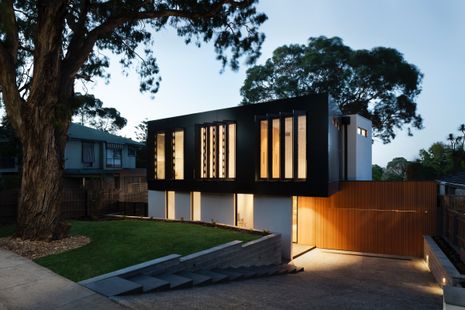|
|
|
|
|
Apartment Pipeline Slows
The pace of apartment construction has slowed by 8% in the past 12 months, according to a new report from JLL.
The JLL Q3 Apartment Market Overview blames continuing difficulties in sourcing staff and recent builder collapses for the lag as well as a move by builders to seek the security of working on big infrastructure projects instead.
JLL senior research director Leigh Warner says as a result things will remain tough in the rental market for some time with less stock coming to market.
“The pipeline’s been shrinking for quite some time. All we’ve seen in the last quarter is a few projects being reactivated and some recent DAs for more density,” he says.
The report says the number of apartments being marketed has dropped 30% in the past year.
Projects that are proceeding are more likely to be build-to-rent projects than build-to-sell, according to Warner with that part of the development market growing by 80% in the past 12 months.
|
|
|
|
|
|
|
|
House Values Hit New Peak
The November interest rate rises appear to have done little to dampen price growth, with CoreLogic figures showing home values have hit a record high.
After reaching a peak in April 2022, national home values fell by 7.5% by January 2023. But the latest data shows national home values are now up 8.1% from that trough, which means the market has recouped all the losses of the recent downturn. CoreLogic research director, Tim Lawless, says while it is great news for those who already own property, it is not good news for those looking to buy.
“Affordability pressures are becoming more pressing amid rising values, high-interest rates and worsening serviceability challenges,” he says.
The downside could also mean that as properties become more unaffordable buyer demand could wane, according to Lawless.
“Higher interest rates, higher housing prices, higher rents and high cost-of-living pressures are likely to weigh on buyer sentiment leading into 2024,” he says.
|
|
|
|
|
|
|
|
Buying Beats Renting in 1/3 of Aus
It’s cheaper to buy than rent more than a third of homes throughout Australia according to a new report from PropTrack.
It found 36% of homes are cheaper to buy than rent, with Queensland, Tasmania and Western Australia offering the highest proportion of homes that cost less to buy.
In Western Australia more than three-quarters of homes were cheaper to buy than rent.
The ratios were even higher in unit markets with 55% of unit markets cheaper to buy than rent.
PropTrack economist Paul Ryan says even though home prices have increased substantially since the start of the pandemic, rents have also skyrocketed.
“This shows that there are still opportunities for buyers across the housing market,” he says.
“A record pace of rent growth, with advertised rents up 14.6 per cent over the past year, has offset higher buying costs in many regions.”
Ryan says buying conditions remain strongest in Queensland, South Australia and Western Australia which is likely to result in price increases in those areas. |
|
|
|
|
|
|
|
Affordability To Worsen
Housing affordability is expected to worsen in the next 12 months, according to the latest ANZ CoreLogic Housing Affordability Report.
While many would expect rising interest rates to push home prices down, the report says the market is actually going through a period of recovery, driven by population growth and a lack of supply.
ANZ senior economist Adelaide Timbrell says savings are being depleted by rising rents making it harder for those who want to buy to save a deposit.
The report says rents have increased 28.4% since the start of the pandemic.
“It becomes harder to accumulate the initial deposit needed to secure a loan,” Timbrell says.
“This is compounded by rising deposit requirements as home values rise, and smaller loan amounts as mortgage rates increase.
“Such conditions help to explain why homeownership has fallen more substantially across lower-income households over time and may result in weaker first home buyer activity going forward.”
|
|
|
|
|
|
|
|
Regions Still Kicking Along
While regional price growth is now at a slower pace compared with capital cities, a number of Australia’s regional markets are still performing well, according to CoreLogic’s latest Regional Market Update.
The report which analyses Australia’s largest 50 non-capital city locations says 12 locations (eight in Queensland, two in NSW and two in Western Australia) hit new price peaks in October.
Bunbury in Western Australia had the largest increase of 4.6% over the three months to October, followed by Lismore (NSW), up 4.3% and St Georges Basin – Sanctuary Point (NSW) up 3.9%.
The report says New South Wales and Queensland were undeniably the best-performing states, each making up four of the top 10 positions in terms of quarterly value growth.
The best performer over 12 months was Bundaberg in Queensland with growth of 10.8% while Albany in Western Australia had the shortest days on market of just 18 days and Lismore had the highest change in annual sales volumes.
|
|
|
|
|
|
|
|
|
| Quote Of The Week
“Such conditions help to explain why homeownership has fallen more substantially across lower-income households over time and may result in weaker first home buyer activity going forward.”
ANZ senior economist Adelaide Timbrell
|
|
|
|
|
|
|
|
|
|










